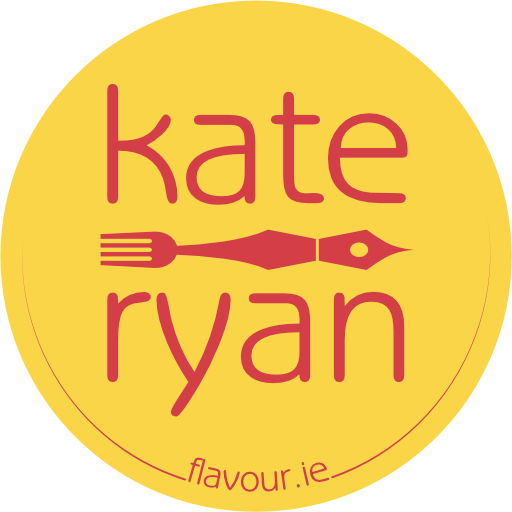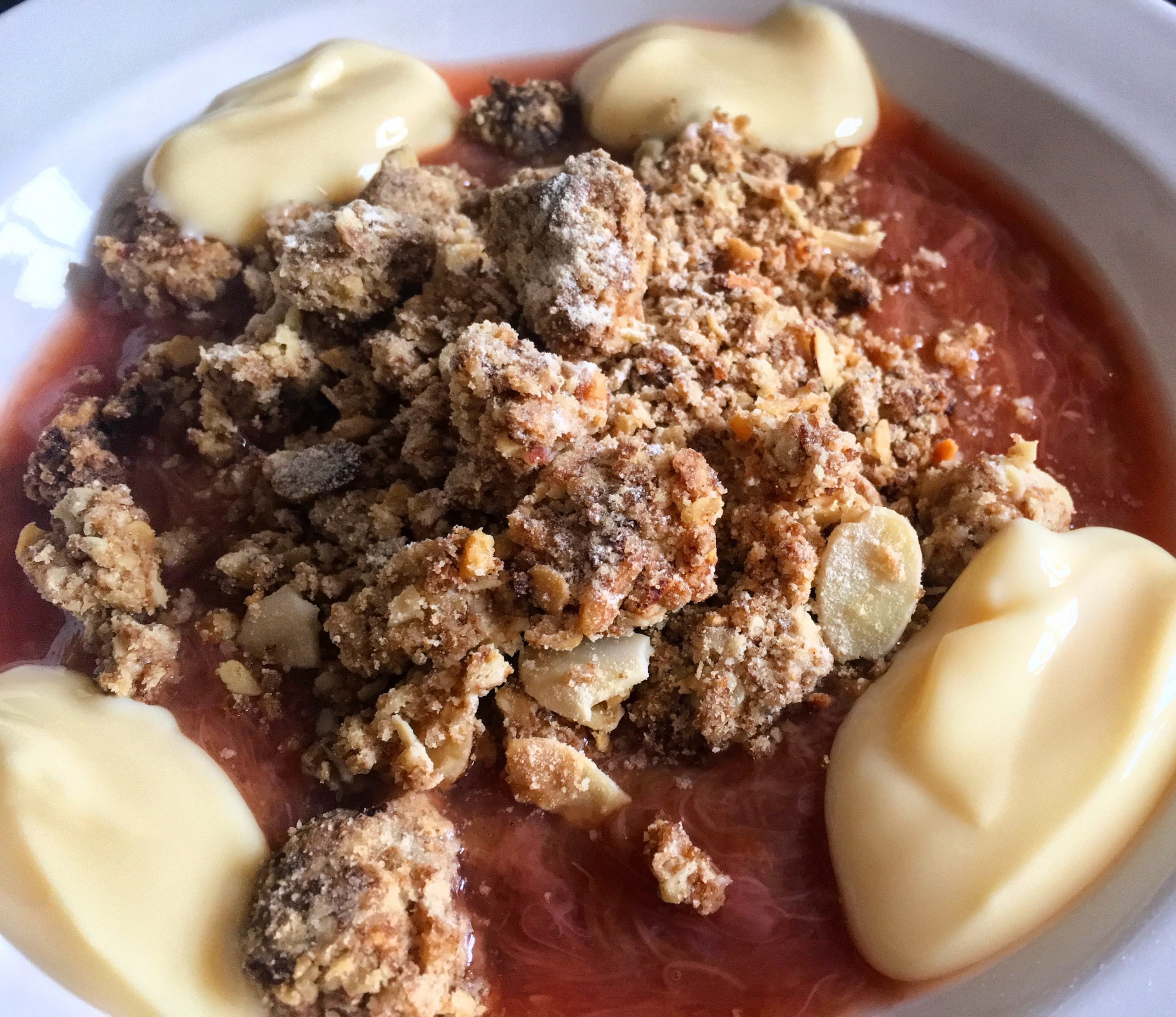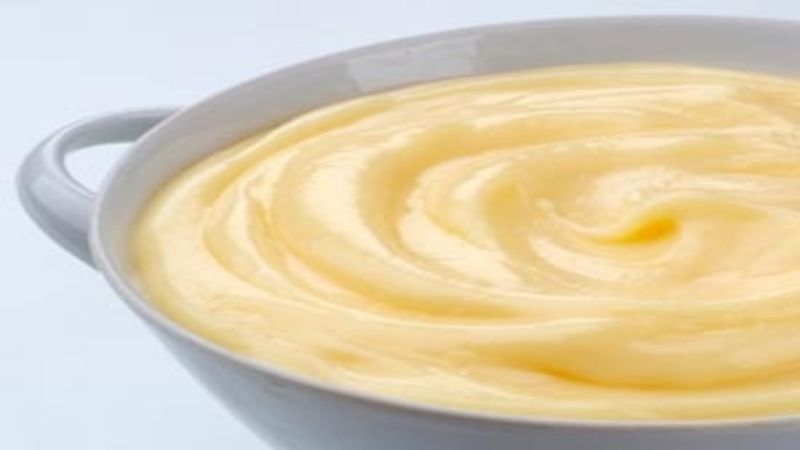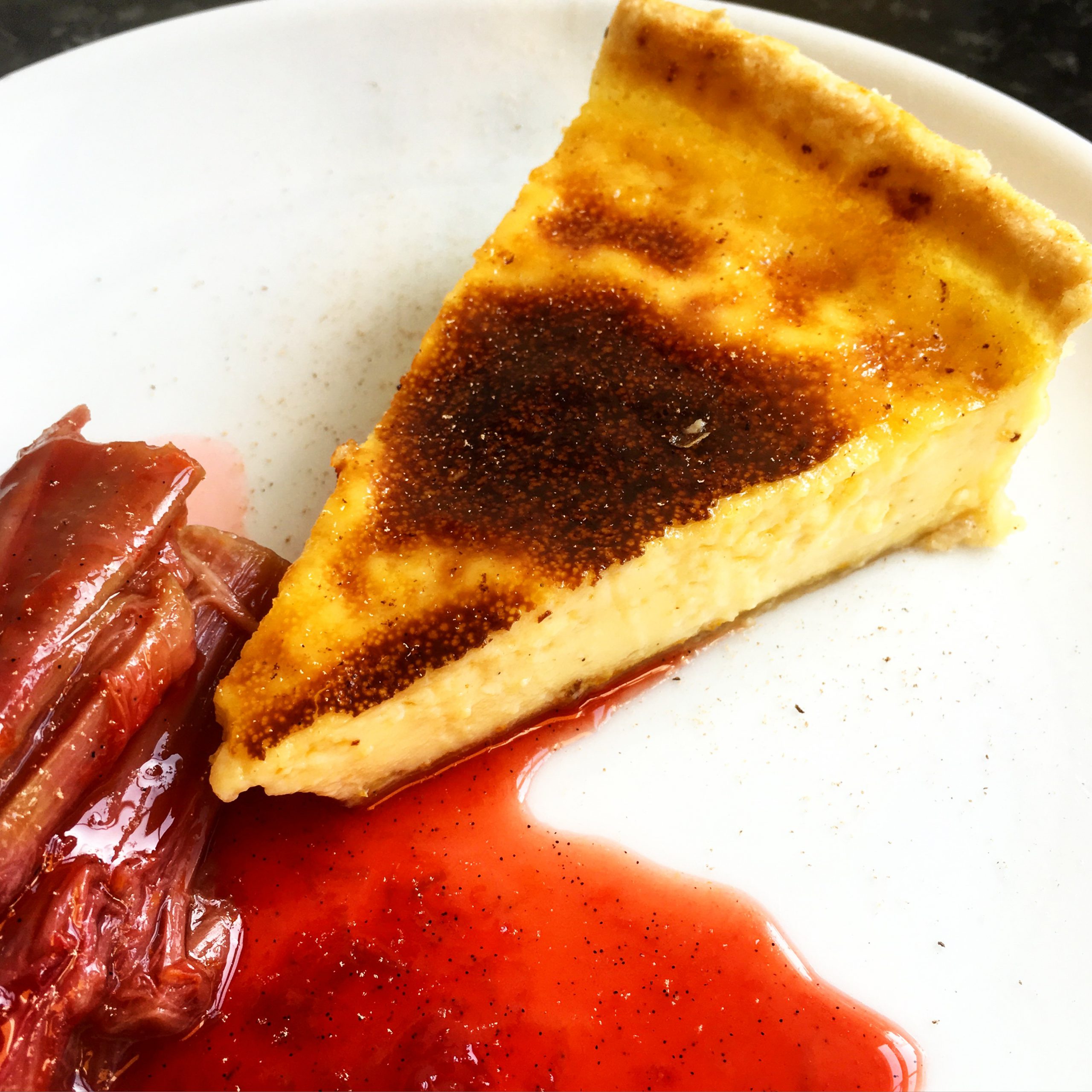Who doesn’t love a crumble? Is it one of the most comforting and versatile of all puddings. But whatever about the fruit, it is getting a good crumble topping that can make it or break it. No one, and I mean no one, wants a soggy crumble. Likewise, if it’s likely to knock out half your teeth, that’s no good either! A crunchy butter granolary (not even a word) texture is what I would consider a total winner.
First the fruit then the crumble.
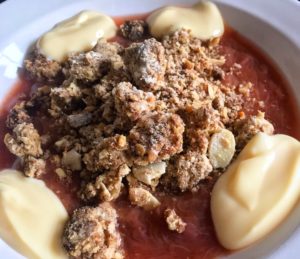 I find that cooking up the fruit first, then topping with your freshly baked crumble is the perfect way to get the balance of soft fruit and buttery crunch that is the epitomy of perfect crumble-faction (again, not even a word, but I don’t even care anymore!)
I find that cooking up the fruit first, then topping with your freshly baked crumble is the perfect way to get the balance of soft fruit and buttery crunch that is the epitomy of perfect crumble-faction (again, not even a word, but I don’t even care anymore!)
Finally, let us talk custard. My love of custard knows no bounds (as my love letter to it recently revealed – click here to read that one). And as much as I love a bit of whipped or clotted cream as the next person, if anyone deigns put anything other than custard with this crumble recipe, in the immortal words of Liam Neeson, I will hunt you down and kill you.
Aside from these few unbreakable and non-negotiable rules (ha!), let crumble (with custard..) be thy saviour. You totally deserve it!
Ingredients:
For the Fruit:
Frankly, I would say that the quantity of ingredients for the fruit base is entirely up to you. Because once you’ve had your fill of fruit and crumble, this will go just as nice over ice cream or with yogurt, over pancakes and all sorts of things. As a basic ratio though, I would say 1 bunch of rhubarb to 2 orange. Ideally blood orange, but if you are making this once that season is over then go for the sweetest orange you can get.
For the Crumble Topping:
You’re gonna love me, because this makes absolutely bucketloads of crumble topping. This is good news because it means you can totally indulge as a pud, plus it actually is delicious for breakfast (weekend breakfast, because it is a tad indulgent!), over yogurt or sprinkled over sliced banana (with custard – OMG!). Just keep it stored in an air tight container after it has completely cooled and it will stay perfectly crunchy!
- 150g plain flour
- 100g butter – super chilled
- 85g dark soft sugar
- handful of nuts: pecans and sliced almonds work a treat here
- sprinkle of cinnamon
Method:
- Heat your oven to 200 degrees Celsius.
- Use a processor blitz together the flour, butter and sugar to a fine breadcrumb consistency.
- Tip out onto a lined baking tray and crumble in your pecans and almonds (or whatever nuts you have to hand).
- Then take some of the crumble topping mixture and press clumps of it together. The butter will bind it together. Work through until it looks like the kind of texture you think would be fairly feckin’ awesome.
- Place the crumble mixture in the fridge. This is for the butter to firm back up again so when you bake it, the nuggets don’t lose their shape.
- Meanwhile, chop the rhubarb into 5cm portions and place in a pan with the zest of 1 orange, juice of two, a 1 tbsp. sugar and a little drop of vanilla paste (if you have it).
- Cover with a lid and cook down slowly until completely stewed down.
- Uncover and continue to cook until some of the excess moisture has evaporated off.
- Take out your crumble mixture from the fridge and pop it in the oven. Cook for about 20 mins watching closely so it doesn’t burn.
- Take out of the oven and turn the mixture careful not to break it down. Place back in the oven for a further 10 mins, but again keep an eye on it so it doesn’t burn.
- In a bowl, ladle out some of the fruit mixture and top with your crumble mixture. Dollop some custard over it, settle down and enjoy every last mouthful!
Of course it goes without saying that this crumble topping works well with any stewed fruit so its great for the changing fruit seasons. Likewise, experiment with flavours that go with rhubarb – a little bit of stem ginger for example would add a nice bit of sweet heat to everything!
ENJOY!
